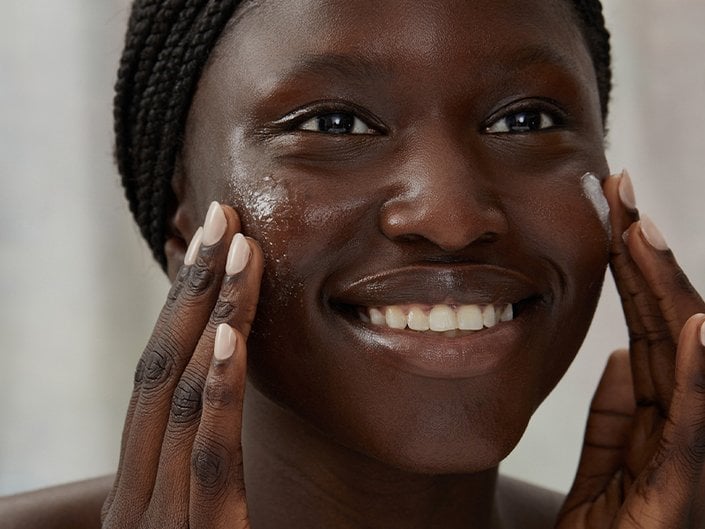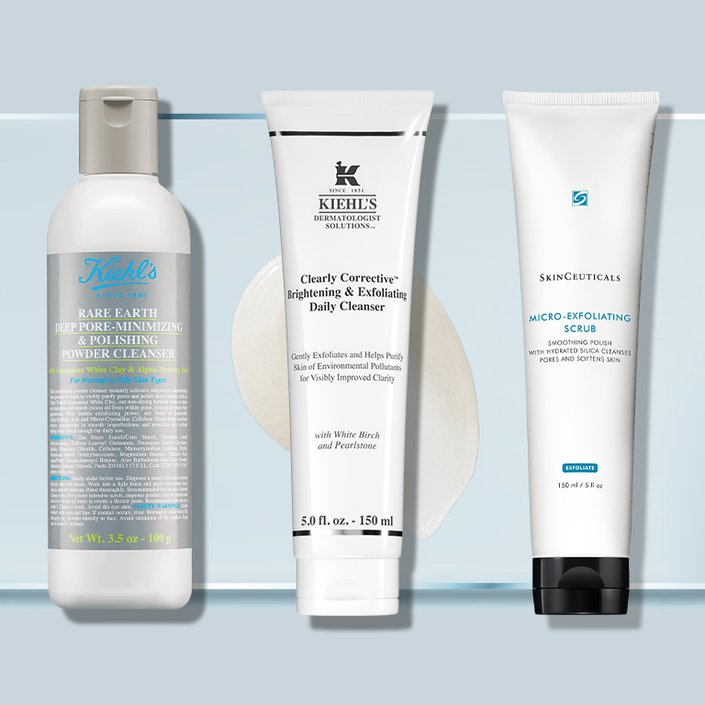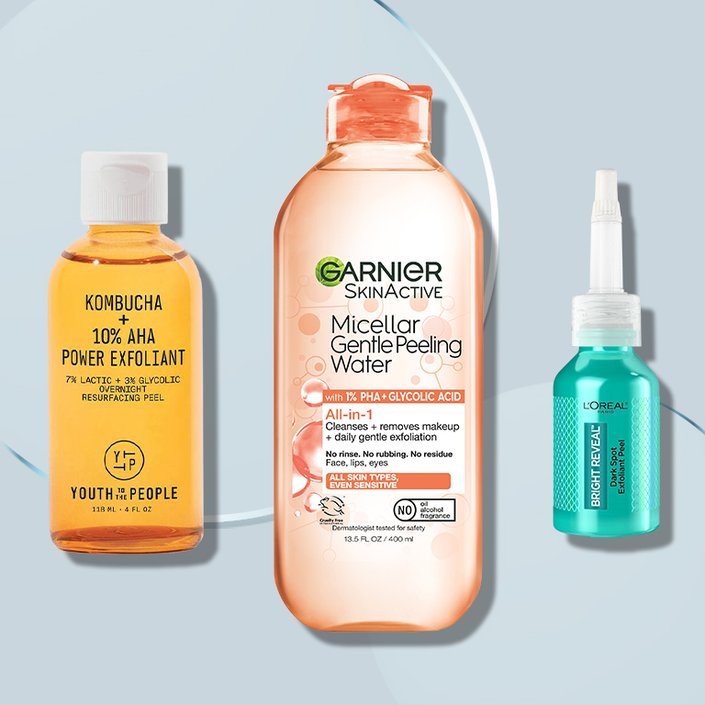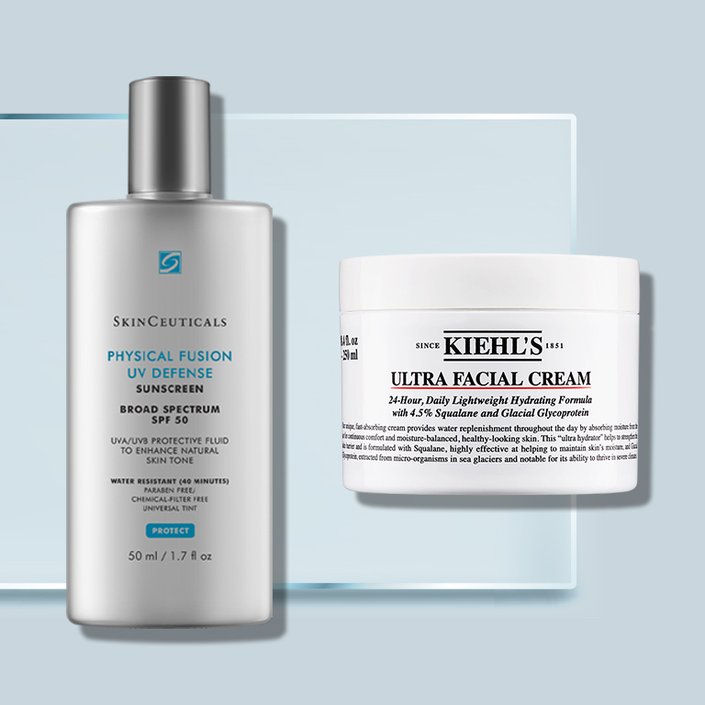How to Exfoliate Your Skin
September 10, 2024
Chemical exfoliation
Chemical exfoliants utilize exfoliating acids or enzymes to help break up and dissolve surface skin cells and debris. Popular acids include beta-hydroxy acids (BHAs), such as salicylic acid, and alpha hydroxy acids (AHAs), like glycolic acid and lactic acid. BHAs are oil-soluble and great for acne-prone skin, while AHAs are water-soluble and can be especially beneficial for dry, normal, and mature skin types.
Like physical exfoliants, chemical exfoliants vary in strength—some are suitable for daily use, but many are intended for less frequent application. If you’re in the market for a gentle chemical exfoliant to add to your skincare routine, we suggest giving the Garnier SkinActive Micellar Gentle Peeling Water a try. The multi-purpose formula cleanses, removes makeup, and helps exfoliate the skin. Use it as you would your standard micellar water or swap it in for your go-to facial toner.
Those seeking a more thorough exfoliation can use an at-home peel, such as the L’Oréal Paris Bright Reveal Dark Spot Exfoliant Peel. It’s made with a powerful blend of chemical exfoliants, including AHAs, BHAs, and PHAs (polyhydroxy acids). You can use it up to four times per week, but if you’re new to exfoliation, you may want to start with once weekly and see how your skin responds.
Alternatively, try the Youth to the People Kombucha + 10% AHA Power Exfoliant. This leave-on peel works while you sleep—smooth it onto freshly cleansed skin and hit the sheets. By morning, you’ll be left with smoother, brighter-looking skin.

The Benefits of Exfoliation
If you’re still wondering “What is exfoliation good for?” here’s your answer. While your skin sheds dead skin cells all on its own (the process, in dermatological terms, is called desquamation), the rate at which this happens slows as we get older. This, paired with the loss of moisture that can occur with age, can leave the skin looking dull, rough, or uneven. Dead skin cell buildup can also contribute to clogged pores and breakouts. Exfoliation helps remove those dead surface cells, promoting a smoother, clearer-looking complexion. Other benefits of exfoliation may include:
- Brighter-looking skin
- More even skin tone and texture
- Smaller-looking pores
- Less noticeable dark spots and discolorations
- Less noticeable fine lines
- Fewer clogged pores and blemishes
Regular exfoliation may also help your other skincare products—think serums, toners, and moisturizers—penetrate the skin more effectively.

How To Exfoliate at Home
Choose your product
The first step in ramping up your exfoliating routine is to consider your skin type and create a routine around that. In general, the more sensitive your skin is, the more gentle you’ll want to be when exfoliating. The AAD recommends opting for mild chemical exfoliants if you’re prone to sensitivity, as these tend to be gentler than stronger acids or physical exfoliants. If you’re unsure which type of exfoliant is right for you, consider scheduling an appointment with a board-certified dermatologist.
Once you’ve narrowed down the best approach for your skin, you’ll want to choose which formula to use. We’ve outlined some of our favorites above, but there are countless exfoliating cleansers, toners, serums, and even moisturizers on the market. Look for one designed for your skin type and specific concerns.
Follow the instructions
If you’re wondering how to exfoliate correctly, the truth is, it depends—on both the product you’ve chosen and the rest of your skincare routine. Scrubs are typically applied to damp skin and gently massaged onto the skin in the shower or at the sink. Exfoliating cleansers, too, can be used in the shower or at the sink. Toners, serums, and at-home peels all have different usage instructions. Your best bet is to (thoroughly) read the instructions on your chosen formula and follow them to a T. Remember to start slowly to avoid irritating or drying out your skin, and avoid using exfoliants on days you use retinol or other retinoids (the combination can be a bit harsh).
Moisturize and protect your skin
No matter which type of exfoliant you use—or how often you exfoliate—you’ll always want to follow up with a moisturizer to help hydrate your skin. We suggest opting for a gentle moisturizer suitable for all skin types, such as the classic Kiehl’s Ultra Facial Cream with Squalane. The nourishing formula helps strengthen and repair the skin’s natural moisture barrier. It also provides up to 72 hours of lightweight hydration and absorbs quickly without a heavy or greasy feel.
You’ll also want to keep in mind that exfoliating, particularly with chemical exfoliants, can make your skin more sensitive to the sun’s damaging rays. As such, you’ll want to be extra diligent about applying SPF after exfoliating. Follow the United States Food and Drug Administration’s (FDA) guidelines and opt for a broad-spectrum formula with an SPF of at least 15. We recommend the SkinCeuticals Physical Fusion UV Defense SPF 50, as it offers a slight, flattering tint and is suitable for all skin types.

Adjust your exfoliation schedule if needed
If you start using an exfoliant and your skin doesn’t seem to be tolerating it well—for example, you experience redness or irritation—you may want to consider taking a break or opting for a gentler exfoliant. There is no one-size-fits-all approach to exfoliating, so start slowly, keep an eye on how your skin responds, and adjust your routine accordingly. If needed, you can also consult a board-certified dermatologist for personalized advice and tips.
Next Up: How to Effectively Use Niacinamide With AHAs and BHAs in Your Skincare Routine
Read more
EXPLORE BY TOPICS AND BRANDS
- expert-advice
- Skin Care Advice
- product-picks
- Scrubs and Exfoliation
- video-embed
- Embedded Video
- CeraVe
- Vichy




























